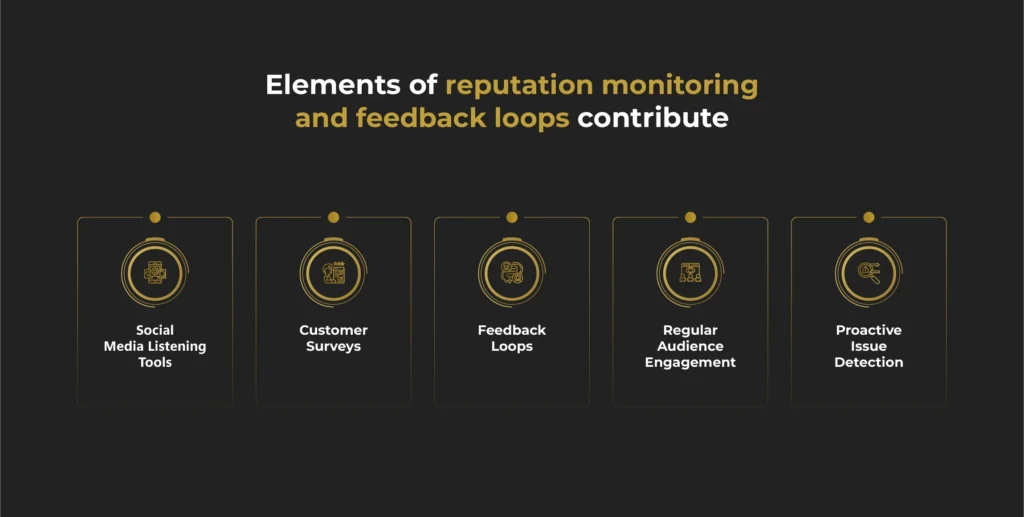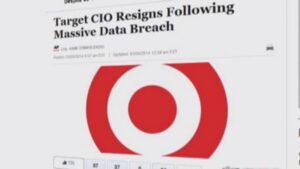A reputation crisis happens when a brand or individual faces a sharp decline in public perception. This can stem from a variety of issues – product failures, unethical practices, data breaches, or communication mishaps.
Unlike routine business challenges, a reputation crisis draws immediate, widespread attention, especially with the amplifying effect of social media.
Public relations plays a key role in managing these situations, and the speed and quality of your response can make all the difference.
Mishandling or delaying your reaction can fuel negative momentum, causing long-term harm that’s difficult to undo. On the flip side, acting swiftly and strategically can significantly reduce the damage, allowing for recovery.
In this article, we’ll break down the critical steps you need to take to handle a reputation crisis effectively and guide your brand back to stability.
[lwptoc depth=”1″ numeration=”decimalnested” numerationSuffix=”dot” title=”Table of Contents” toggle=”0″ backgroundColor=”#ffffff” borderColor=”#ffffff” linkColor=”#997317″]
What Triggers a Reputation Crisis?
A reputation crisis doesn’t come out of nowhere. There are usually clear triggers that set off the chain reaction, but sometimes these can be difficult to spot in time.
Here are some common causes of reputation crises:
Product Failures
When a product doesn’t meet expectations or, worse, poses a danger to consumers, it can result in a PR nightmare.
Samsung’s infamous Galaxy Note 7 recall is a perfect example. The company was forced to recall millions of phones after reports of batteries catching fire.
Image Credit: BBC News
The crisis was exacerbated by their initial lack of clear communication with the public.
A more recent example is Microsoft’s global outage, which left approximately 8.5 million devices inaccessible due to a faulty software update from cybersecurity firm CrowdStrike.
This disruption affected critical sectors like healthcare and travel, underscoring the potential ripple effects of insufficient quality control and the importance of transparent, timely communication in crisis handling.
Customer Service Failures
Poor handling of customer complaints can lead to a massive loss of goodwill.
Consider the United Airlines incident where a passenger was forcibly removed from an overbooked flight in 2017.
Image Credit: The Sydney Morning Herald
The video went viral, sparking outrage worldwide, and United’s sluggish response made the situation worse.
Scandals Involving Key Figures
When a high-profile executive or influential figure engages in unethical or illegal behaviour, the repercussions can damage the entire organisation’s reputation.
Consider the case of Carlos Ghosn, the former CEO of Nissan. Accused of financial misconduct, Ghosn’s scandal cast a shadow over the company, shaking investor confidence and tarnishing Nissan’s public image.
His actions not only led to his own downfall but also sparked significant turmoil within the organisation, underscoring how a leader’s missteps can have far-reaching consequences for a brand.
Data Breaches
In our increasingly digital world, protecting consumer data is paramount.
Brands like Facebook and Equifax suffered immense reputational damage following large-scale data breaches that exposed users’ personal information.
These breaches undermined public trust and highlighted the importance of cybersecurity.
Miscommunication or Poor Marketing Decisions
Sometimes, even well-meaning marketing campaigns can go horribly wrong.
Pepsi’s 2017 ad featuring Kendall Jenner attempting to defuse a protest with a can of soda was widely panned for being tone-deaf.
Image Credit: The New York Times
Pepsi quickly pulled the ad and issued an apology, but the damage to the brand’s image lingered, showing how poor marketing decisions can quickly spiral into a PR crisis.
The Ripple Effect of a Reputation Crisis
The impact of a reputation crisis can be severe and far-reaching. Here’s what happens when a crisis hits:
Loss of Trust
The most immediate impact of a reputation crisis is a loss of trust. Consumers, employees, and investors begin to question the credibility of the brand. Trust is hard to build and even harder to regain once lost.
The 2017 Equifax data breach is a notable example of trust lost in a reputation crisis. After exposing personal data of nearly 150 million people, the company’s delayed and vague response left consumers feeling exposed and betrayed, causing lasting damage to Equifax’s credibility and image.
Decline in Sales and Revenue
When consumers lose faith in a brand, they vote with their wallets. A company experiencing a reputation crisis will often see an immediate dip in sales and may struggle to attract new customers.
Volkswagen’s 2015 emissions scandal shows how a reputation crisis can hurt sales and revenue. Once it was revealed they had rigged emissions tests, consumer trust collapsed, leading to a sharp decline in sales and costly legal repercussions.
Damage to Stock Prices
For publicly traded companies, a reputation crisis can lead to a sharp decline in stock prices as investors lose confidence. This further amplifies the financial damage caused by the crisis.
The BP oil spill in 2010 serves as a stark reminder of how a reputation crisis can devastate stock prices. Following the disaster, BP’s stock plummeted by nearly 50% as investors reacted to the environmental damage and anticipated hefty fines.
Difficulty in Retaining Talent
A brand embroiled in scandal may find it difficult to retain top talent, as employees don’t want to be associated with a company that’s under fire.
The Uber scandals in 2017 highlight how reputation issues can make it hard to retain talent. Amid allegations of toxic workplace culture and legal troubles, many employees left the company, and recruiting new talent became a challenge.
Legal and Regulatory Consequences
Some reputation crises lead to investigations by regulatory bodies, lawsuits, or even government intervention. This can prolong the crisis and deepen the damage to the brand’s image.
Wells Fargo’s 2016 fake accounts scandal illustrates how reputation crises can lead to legal and regulatory consequences. After it was revealed that employees had created millions of unauthorised accounts, the bank faced investigations, hefty fines, and multiple lawsuits
How to Respond to a Reputation Crisis – Key Tactics
Successfully managing a reputation crisis requires a multi-faceted approach. The goal isn’t just to put out the immediate fire but to create a framework for recovery and future prevention.
Immediate Response Tactics
When a reputation crisis hits, time is of the essence. The way you respond in the first 24 to 48 hours can dictate the trajectory of the crisis.
Here are the steps you should take immediately in your crisis handling process:
1. Acknowledge the Issue
One of the biggest mistakes companies make is failing to acknowledge the problem.
Whether out of fear or indecision, silence or denial only worsens the situation. Instead, it’s crucial to recognize the issue as soon as possible.
A simple public statement that acknowledges the problem and assures the audience that action is being taken can go a long way toward calming the waters.
For instance, after Samsung’s Galaxy Note 7 disaster, the company was slow to recall the faulty phones, and their initial lack of transparency fueled customer frustration.
Eventually, Samsung issued a global recall and took responsibility, but the delay cost them dearly.
In contrast, Johnson & Johnson’s response to the 1982 Tylenol poisoning crisis is often cited as a textbook example of effective crisis handling.
As soon as the issue arose, the company issued public warnings, recalled products nationwide, and worked with authorities. This swift, transparent approach helped restore trust and safeguarded their reputation.
2. Transparent Communication with Stakeholders
Once you’ve acknowledged the problem, the next step is to communicate openly and transparently with your stakeholders. This includes customers, employees, investors, and the media. Keeping everyone informed not only helps control the narrative but also demonstrates accountability.
When dealing with the media, be prepared to answer tough questions and avoid being defensive. A clear, concise message that focuses on facts and the steps being taken to address the issue is critical.
Toyota’s response to the 2010 accelerator pedal recall highlights the value of transparent communication. After reports of unintended acceleration, Toyota quickly issued recalls, held press conferences, and provided regular updates. By openly addressing concerns and detailing corrective actions, they worked to rebuild trust and reassure customers.
3. Act Quickly and Decisively
Time is of the essence in a crisis. Whether it’s issuing a recall, firing a key executive, or rolling out a PR campaign, decisive action shows that you’re serious about resolving the issue. Taking swift, corrective measures will prevent the crisis from escalating further.
In the wake of its data breach in 2018, Marriott acted quickly by notifying affected customers, offering free credit monitoring, and collaborating with authorities to investigate the incident. Their swift response and immediate corrective actions helped mitigate the damage and demonstrated their commitment to addressing the breach head-on.
Developing a Comprehensive Reputation Management Strategy
A one-size-fits-all approach doesn’t work for crisis management. Each crisis is unique, and the strategy must be tailored accordingly.
That said, there are key elements that should be part of any comprehensive crisis management plan:
1. Identifying Key Messages
Your messaging should address the concerns of your stakeholders while also reflecting the values of your brand. It’s important to strike a balance between acknowledging the severity of the situation and demonstrating your commitment to making things right.
In crafting your key messages, focus on empathy, accountability, and a clear path forward. Avoid shifting blame or minimising the problem — these tactics can backfire and erode trust further.
2. Engaging with the Media and Public
Media coverage can either help you or hurt you during a crisis. By engaging proactively with the media, you can take control of the narrative and ensure that your side of the story is heard.
Social media, too, is an important channel for communicating directly with your audience. Use these platforms to provide real-time updates, answer questions, and demonstrate your commitment to transparency.
For example, when Tylenol faced a product tampering crisis in the 1980s, the company’s quick recall of products and transparent communication with the media helped rebuild trust.
Rebuilding Reputation Post-Crisis
Once the immediate threat has passed, it’s time to focus on long-term recovery. Rebuilding a tarnished reputation is a marathon, not a sprint, but with the right strategy, it can be done.
Long-Term Strategies for Restoring Brand Trust
The process of restoring trust begins with addressing the root cause of the crisis. This could involve implementing new policies, improving quality control, or rethinking your brand’s values.
Here are a few steps to consider in the rebuilding phase:
1. Demonstrate Accountability
One of the most important elements of rebuilding trust is showing that you’re willing to take responsibility for what happened. This might involve issuing a public apology, compensating affected customers, or making internal changes to prevent future crises.
2. Consistently Deliver on Promises
After a crisis, your actions will speak louder than words. It’s essential to consistently deliver on the promises you’ve made to your stakeholders. Whether it’s improving product safety, enhancing customer service, or increasing transparency, you must follow through to show that you’re serious about rebuilding trust.
3. Emphasise Positive Values and Achievements
Rebuilding your brand’s reputation isn’t just about apologising for past mistakes — it’s also about highlighting the positive values that define your brand. Whether it’s through community involvement, social responsibility initiatives, or innovation, demonstrating that your brand stands for something bigger than the crisis can help restore goodwill.
Importance of Reputation Monitoring and Feedback Loops
In the aftermath of a reputation crisis, simply addressing the immediate issues is not enough. Maintaining a vigilant eye on public sentiment and continuously gathering feedback is essential for ensuring that recovery efforts are effective and that similar issues are prevented in the future.
Reputation monitoring and feedback loops help your brand stay connected with your audience, detect potential problems early, and make informed adjustments along the way.
Here’s how various elements of reputation monitoring and feedback loops contribute to this process:
Social Media Listening Tools
Social media listening tools like Hootsuite, Sprout Social, and Brandwatch allow you to monitor brand mentions and conversations in real-time across various platforms. These tools help you quickly identify emerging issues and track keywords related to your brand, enabling a prompt response before problems escalate.
This kind of proactive monitoring guides your crisis handling efforts, ensuring you stay attuned to your audience’s concerns.
Customer Surveys
Customer surveys are a powerful tool for gathering direct feedback from your audience. Conducting surveys regularly helps you gauge customer satisfaction, understand their experiences, and identify areas where your brand may still need improvement.
The feedback collected can provide a clear picture of how well your crisis response is being received and whether further adjustments are necessary. Surveys also show customers that their opinions matter, which can help in rebuilding trust and loyalty after a crisis.
Feedback Loops
Establishing continuous feedback loops with customers, employees, and other stakeholders is crucial for ongoing reputation management.
Feedback loops create a structured way to collect insights on a regular basis, allowing you to monitor your brand’s recovery and make timely adjustments.
This approach keeps communication channels open, enabling you to proactively address concerns as they arise. Over time, maintaining these loops fosters a sense of transparency and accountability, reinforcing your brand’s commitment to improvement.
Regular Audience Engagement
Engaging regularly with your audience is vital for maintaining a positive reputation. By actively participating in conversations on social media and other channels, you demonstrate that you’re listening and genuinely care about their concerns.
Consistent engagement also allows you to answer questions, clarify misunderstandings, and provide updates on ongoing recovery efforts.
Proactive Issue Detection
Effective reputation monitoring helps you detect potential issues before they escalate. By keeping a close eye on public sentiment and feedback, you can identify warning signs early on and take pre-emptive actions to mitigate risks.
Proactive issue detection ensures that you stay ahead of any negative developments, allowing you to address problems promptly and prevent them from becoming full-blown crises.
Case Studies of Successful Reputation Recovery
Effectively managing a reputation crisis requires a strategic approach and clear communication. Here are three examples of companies that successfully navigated reputation crises through strategic and transparent recovery efforts:
1. Domino’s Pizza – Quality Perception Crisis (2009)
In 2009, Domino’s Pizza faced a reputation crisis when a viral video showed employees mishandling food, and surveys revealed widespread dissatisfaction with product quality.
In response, Domino’s launched a campaign acknowledging their shortcomings and committed to improving their pizza recipe. They invited customer feedback and used it to make substantial menu changes.
This transparency and willingness to change helped Domino’s rebuild trust, and the company saw significant growth in both sales and customer loyalty as a result.
2. Target – Data Breach (2013)
Target experienced a major data breach in 2013, compromising the personal and financial information of millions of customers.
To recover, Target quickly informed affected customers, provided free credit monitoring, and implemented stricter security measures. They also improved their cybersecurity infrastructure and appointed a new Chief Information Officer.
Through these actions and consistent communication with customers, Target managed to restore its reputation and reassure its customer base, ultimately regaining consumer confidence.
3. PepsiCo – Pesticide Scandal in India (2003)
In 2003, PepsiCo faced a crisis in India when a report alleged that its products contained high levels of pesticides.
In response, PepsiCo launched a comprehensive public relations campaign that included independent testing, transparency about product safety, and direct engagement with the public and government.
By actively addressing the concerns and proving their product safety, PepsiCo managed to restore consumer trust in India and recover its market position.
Final Thoughts
A reputation crisis can feel overwhelming, but with a strategic response, your brand can emerge stronger. Effective crisis handling goes beyond just addressing negative events—it’s about showing accountability, taking ownership, and using the experience to improve.
However, navigating these situations alone can be challenging, especially with the rapid shifts in the digital environment.
If you’re facing a reputation crisis or want to proactively protect your brand’s image, it’s time to partner with a team that understands the stakes. At Dominate Online, we offer results-driven reputation management solutions designed to restore trust and build resilience. With a blend of strategic insights and data-driven tactics, we empower your brand to not only recover but to dominate your market.
Our team of experts is committed to providing personalised support, guiding you every step of the way. From crisis response to long-term reputation management, we’re here to help you transform challenges into opportunities for growth.
Let us help you not just be seen but be remembered for all the right reasons. Build your brand, dominate your market, and drive results with Dominate Online – your partner in digital domination.
Ready to regain control of your brand’s narrative and establish a stronger digital presence? Learn more about our reputation management services and contact us today!
Responding to a Reputation Crisis FAQs
How can reputation management services help my business recover from a crisis?
Reputation management services provide expert guidance to address negative perceptions, restore trust, and improve brand credibility. Professionals can help you create and implement a crisis response plan, monitor public sentiment, and communicate effectively with your audience, all of which are essential for a successful recovery.
What is online reputation management?
Online reputation management (ORM) involves monitoring and influencing how a brand or individual is perceived online. By tracking mentions and reviews across platforms, ORM addresses negative content, promotes positive information, and ensures that digital perceptions align with the brand’s values, helping maintain a positive online presence.







